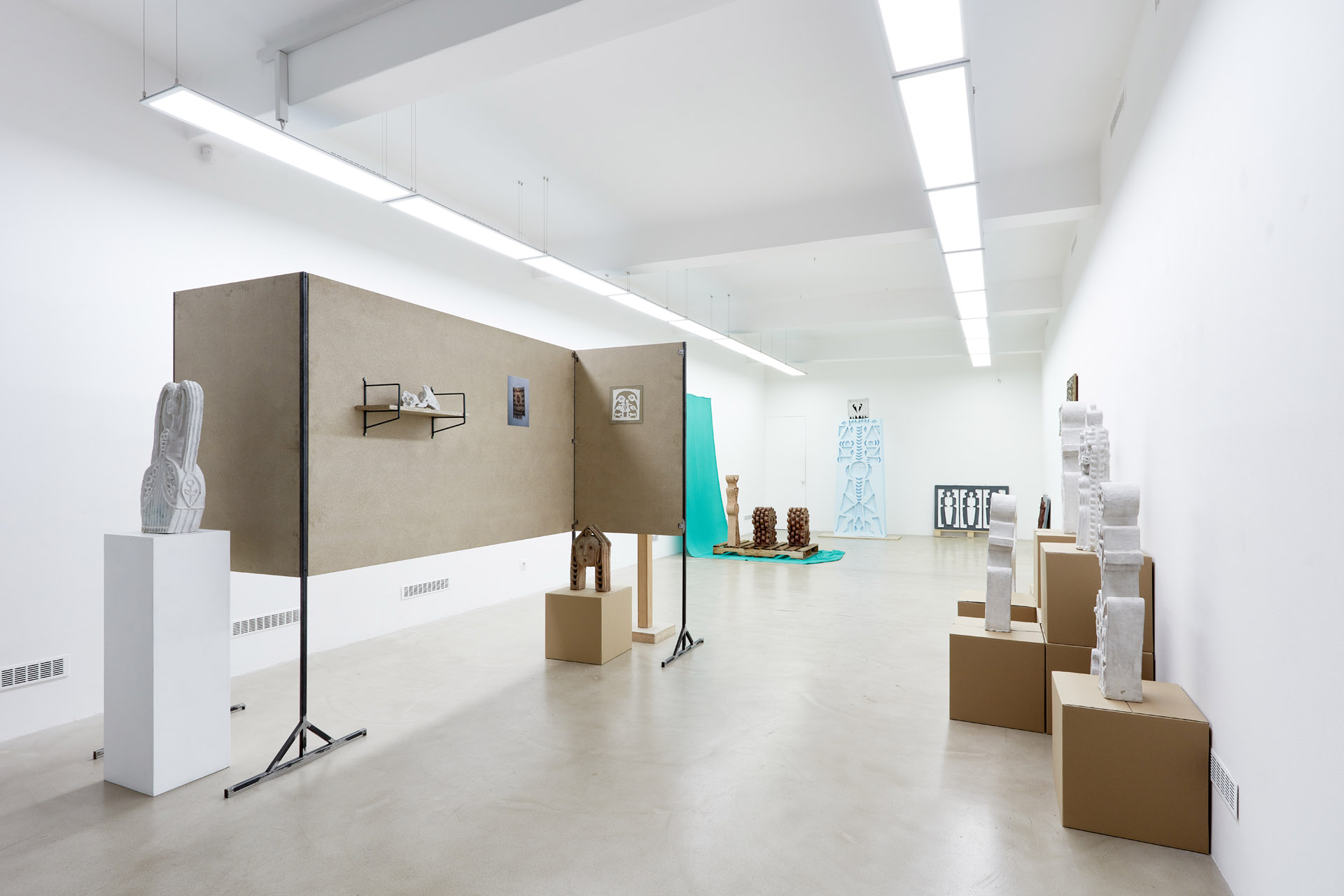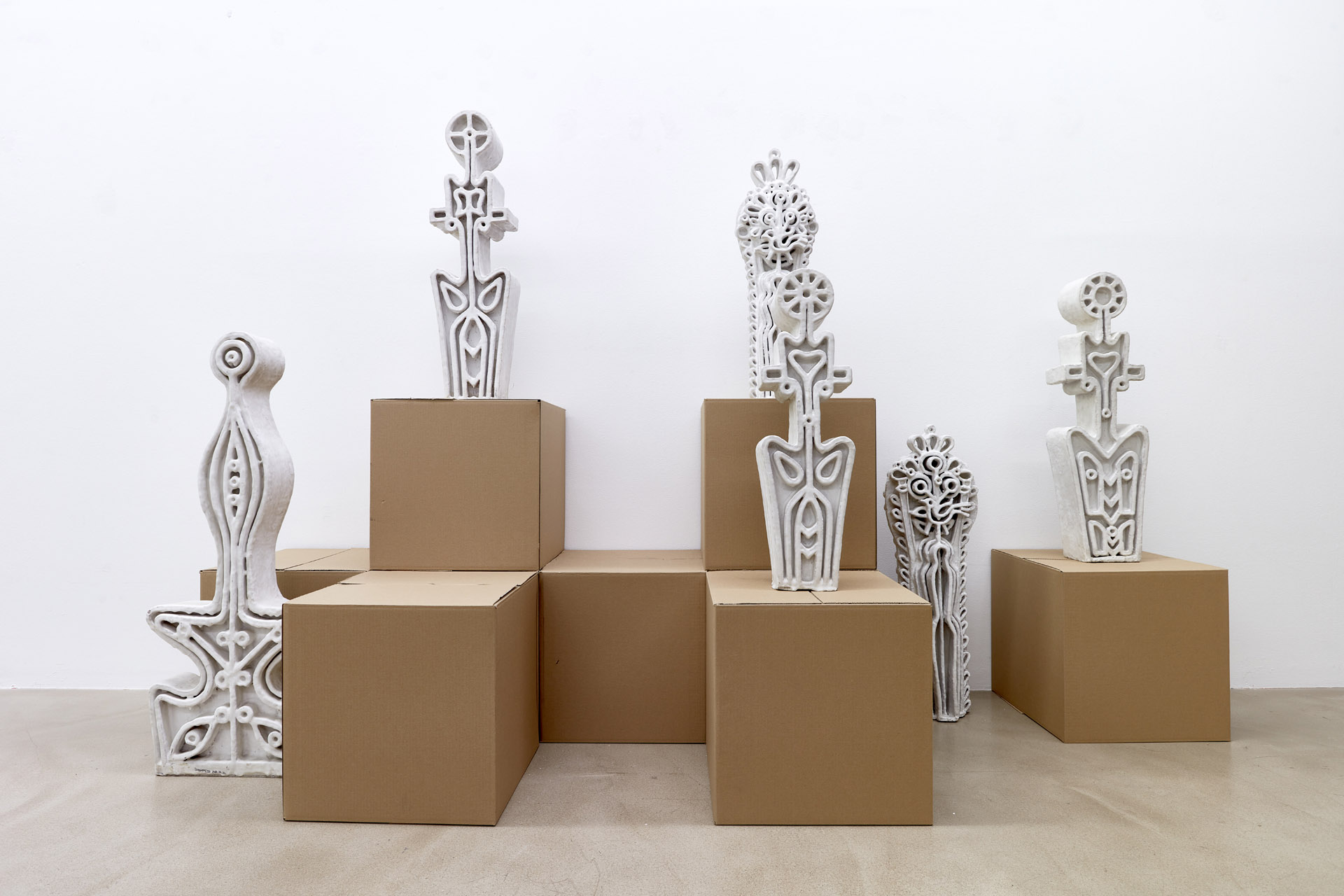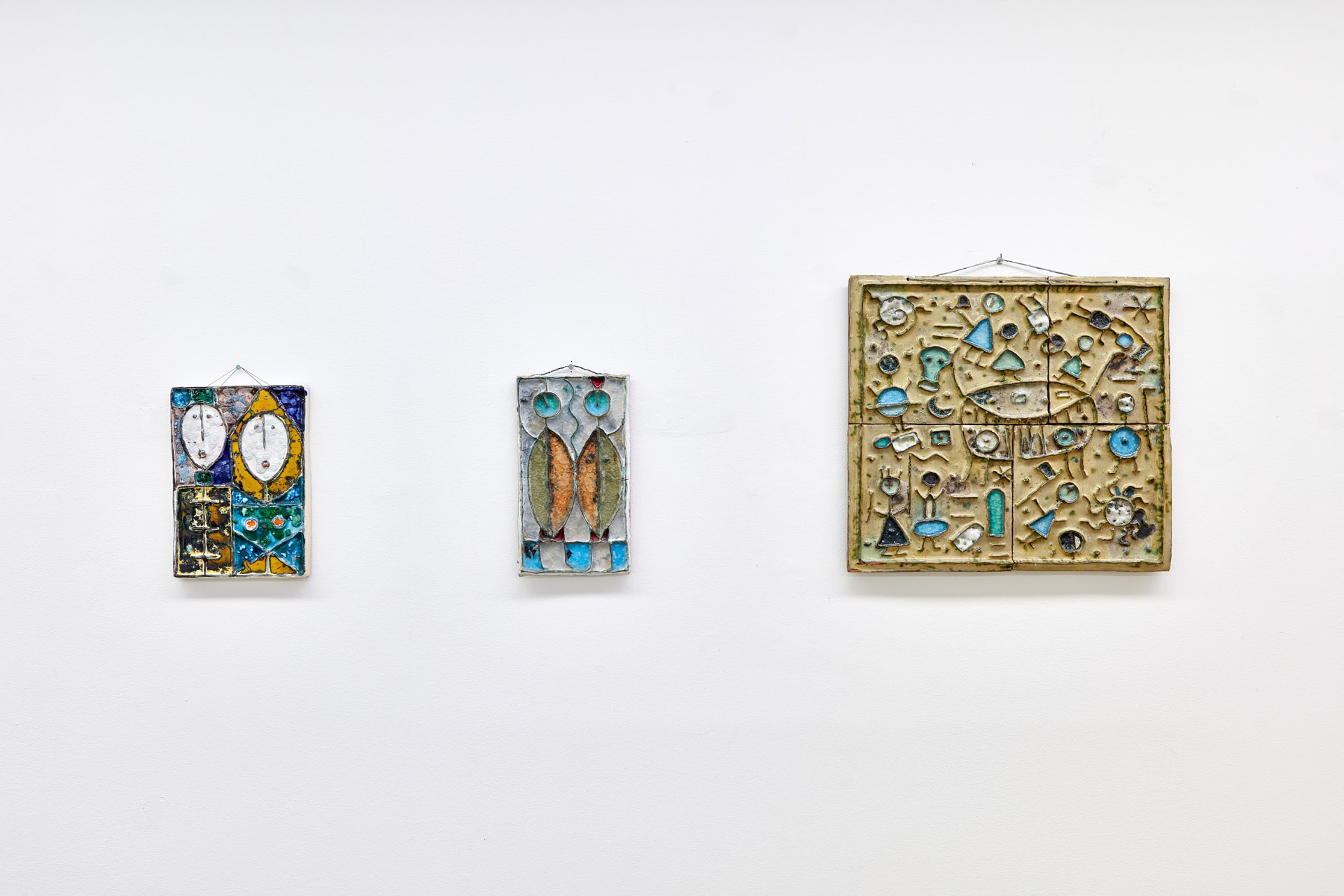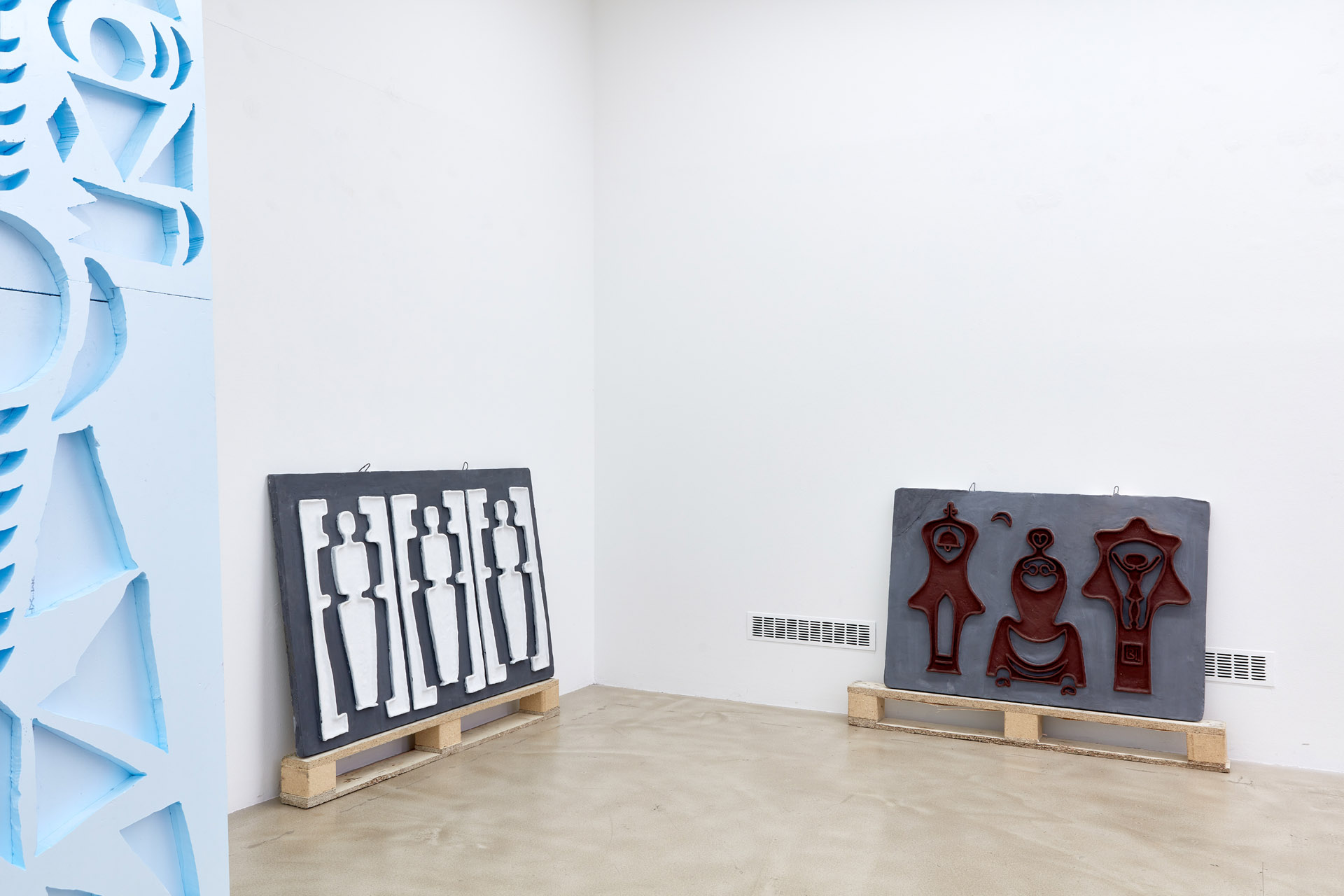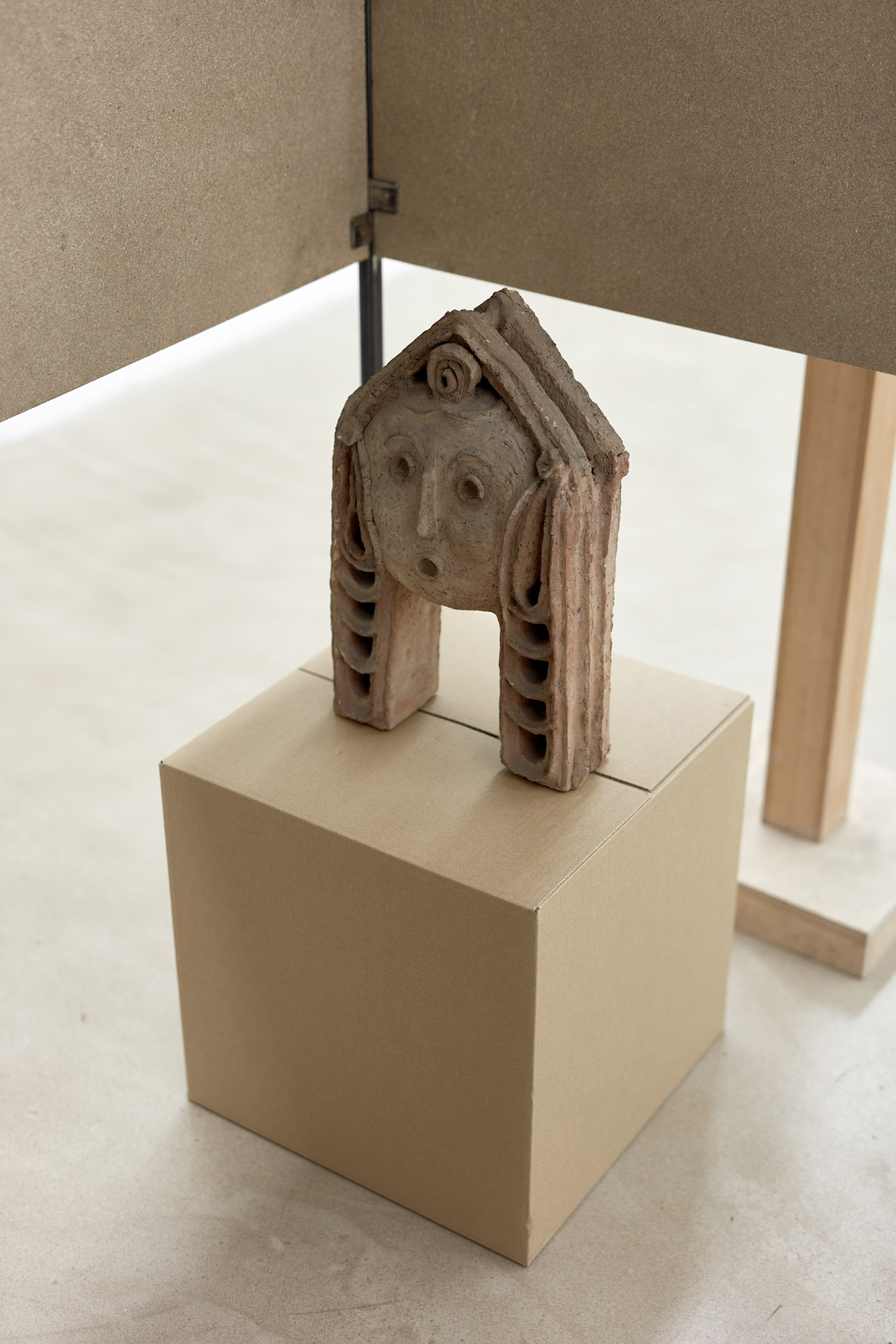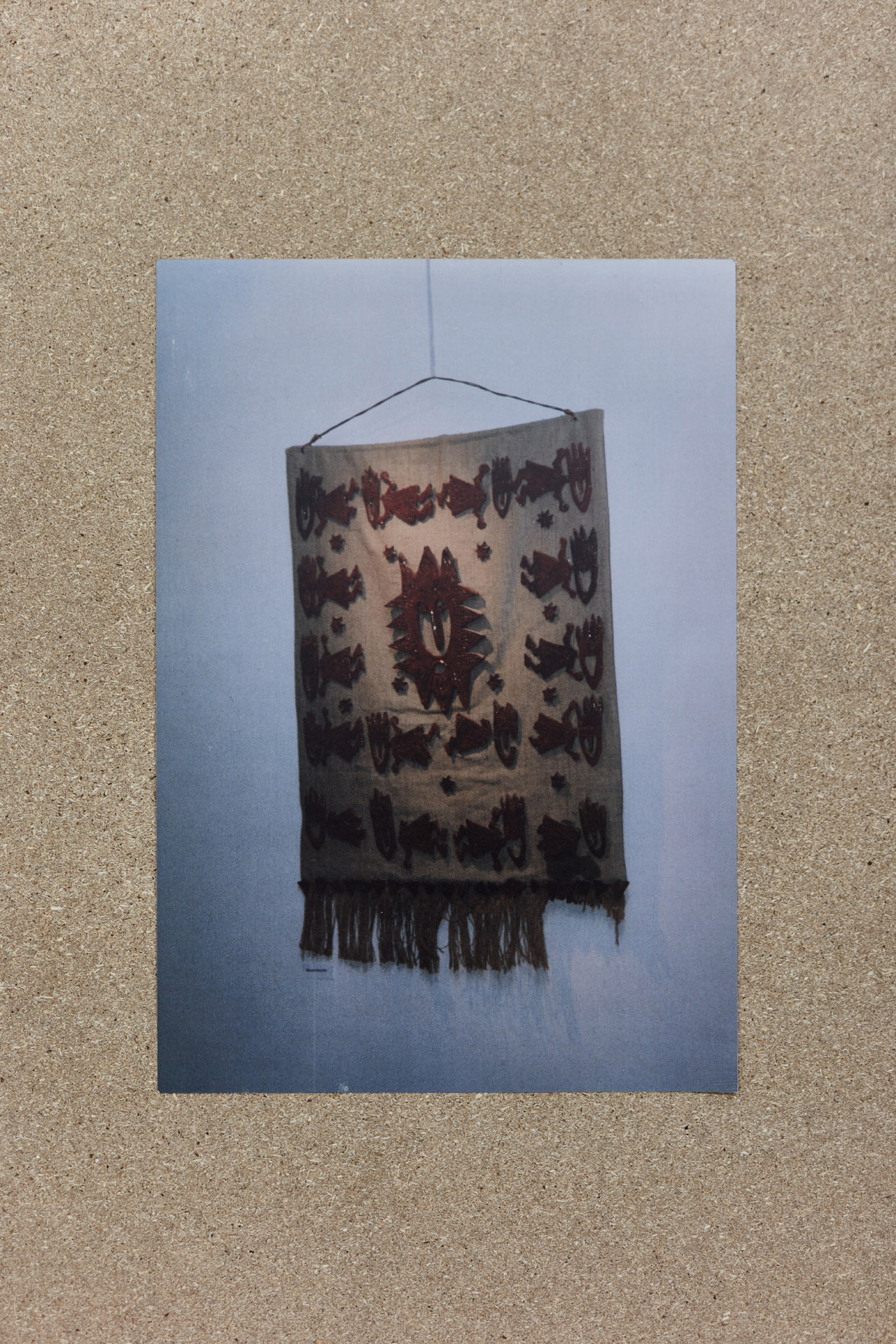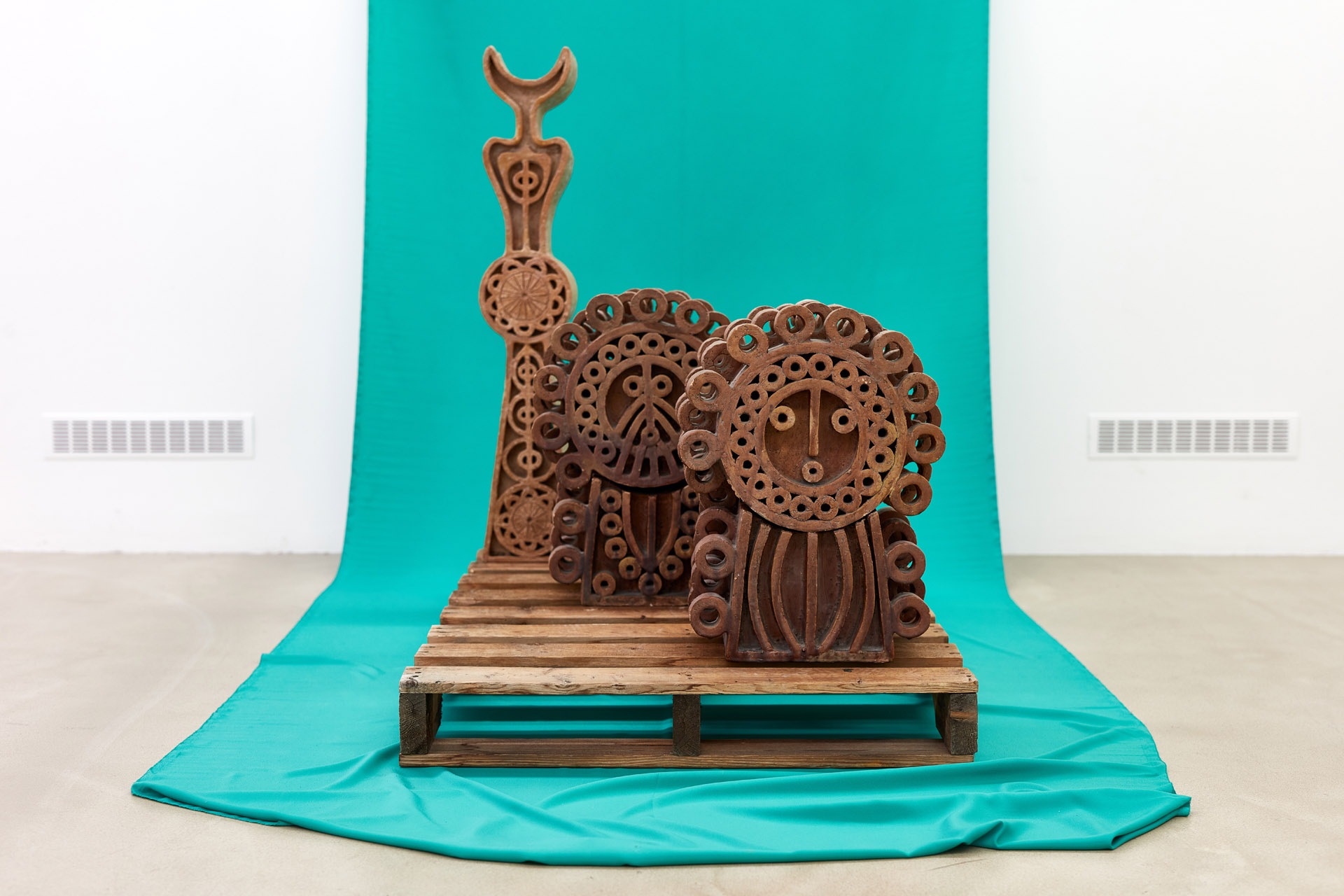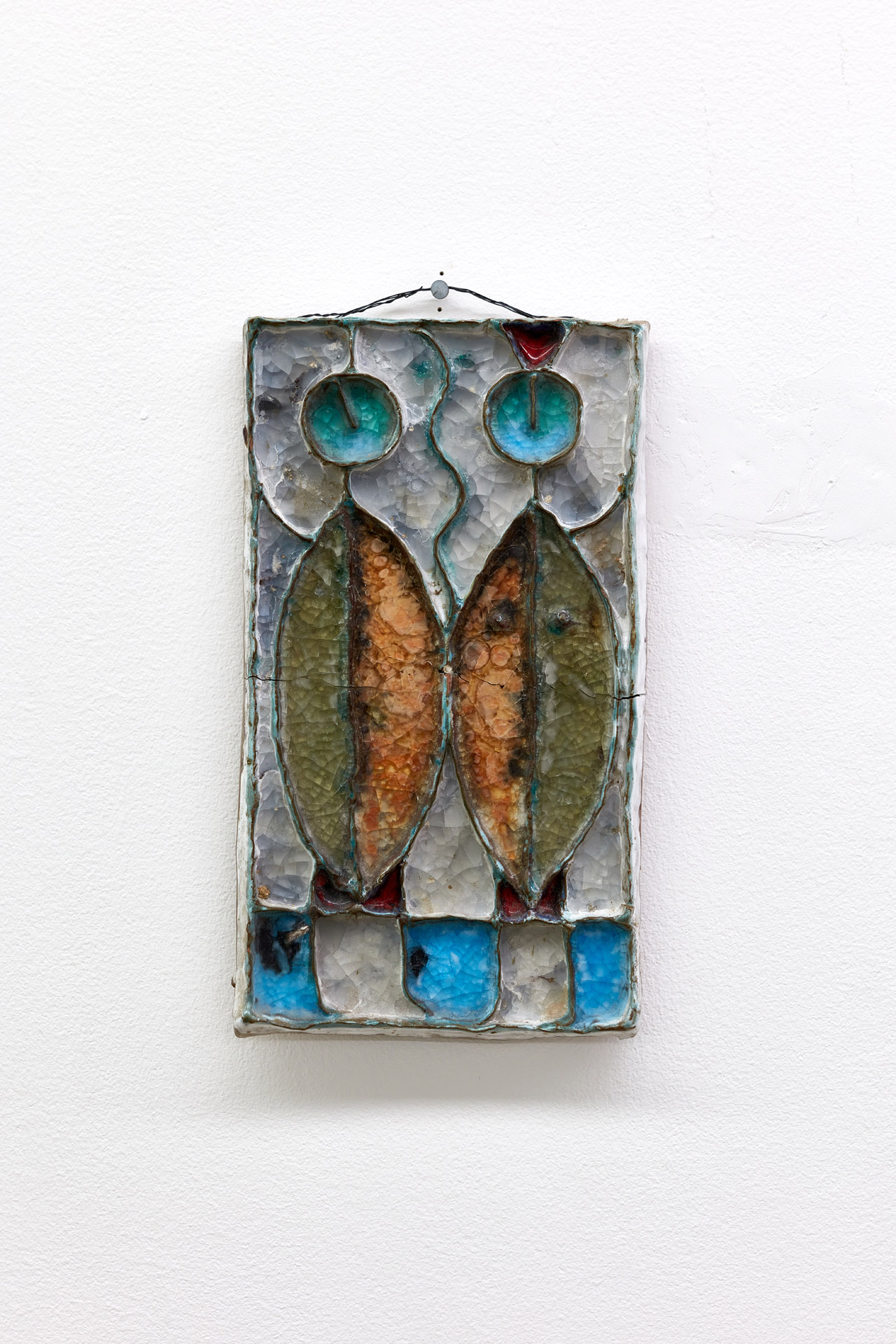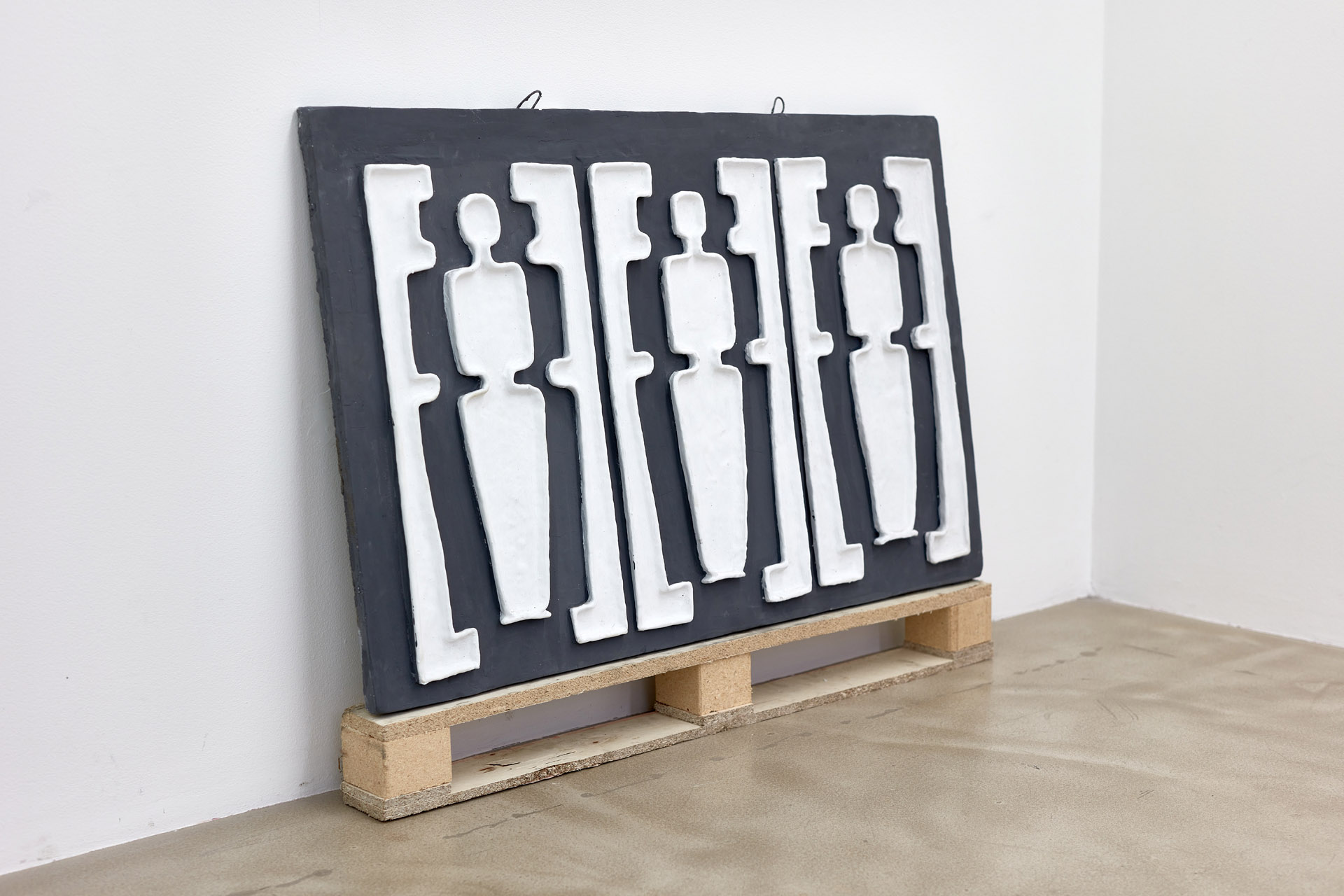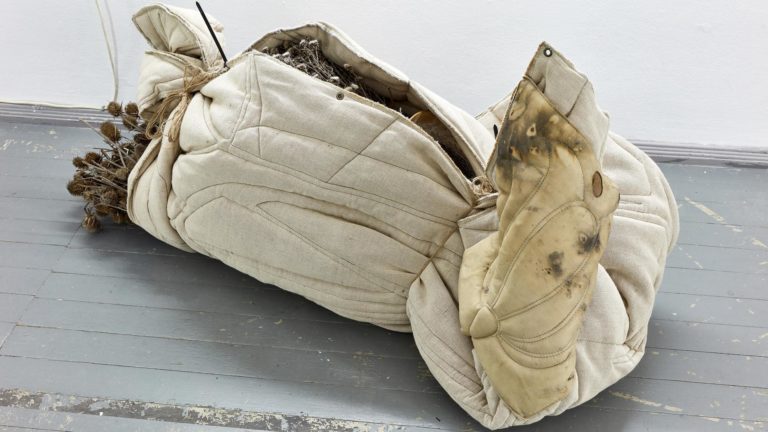Artist: Mária Szilágyi
Exhibition title: Dreams Dreamed on Peas
Curated by: Kristóf Kovács (Gergely Sajnos, crime scene investigator)
Venue: Horizont Gallery, Budapest, Hungary
Date: December 15, 2021 – January 26, 2022
Photography: Dávid Biró, all images copyright and courtesy of the artist and Horizont Gallery, Budapest
The exhibition will be opened by: Dr. Géza Balázs, linguist, ethnographer, university professor
After the closure of an artist’s oeuvre, it often occurs that more and more new aspects come to life in connection with the broader interpretation of the cultural legacy. However, the case of ceramic artist Mária Szilágyi is quite unique, since the artist, who had completed her studies at the Hungarian University of Arts and Design, provided artworks as props for Etus Szikszay, one of the iconic main characters of the series Szomszédok from 1987 to 1999. Therefore, the case stemming from this situation offers a whole new reading of the work of the ceramic artist, who passed away in 1979.
Mainly, the uniqueness of the story lies in the state of „Wild East”, which was created by the late socialism. The television series transposed the whole oeuvre of Szilágyi to a genuine, mostly lifelike, but imaginary environment, i.e. the television screen, so that the artworks served as a part of a proper scenery, which provided necessary and credible pictures of the period in the weekly broadcasted scenes. Thanks to this, these ceramics meant the transition between the socialist realism and the modern art for the creators of the series and its viewers. Nonetheless, an average viewer could not get to know much about the real creator of the unique artworks. This raises the question who Mária Szilágyi really was and to what extent her ceramics fit into the context put together by the creative producers.
The exhibition titled „Dreams Dreamed on Peas” at Horizont Galéria tackles with this question as well as makes an attempt to introduce the real creator of the artworks built from organic elements, and are sometimes folkloric or contain biblical references. In parallel with this, the exhibition endeavours to illustrate some of the dominant elements in Mária Szilágyi’s legacy, through which we can gain an insight about the vulnerable oeuvre, that can be considered complete with the death of the artist at the end of the ’70s. However, aside from the aforementioned created context, her work can still provide current topics even to this day, such as the initial and current state of managing the collections of the regional cultural institutions or questioning the credibility of today’s canonized oeuvre, as well as the spiritual feminist approach of female characters in ballads, which is one of the main motif of the artworks.
The exhibition endeavours to reconstruct the atmosphere and the environment of the ceramics with certain elements of the iconic series together with some remarkable pieces from the significant oeuvre that has now faded into obscurity. Of course, the exhibition makes all this fully comprehensible by creating the right context for the given situation.
Special thanks to: Dr. Géza Balázs, Panni Bodonyi, Zita Beke, Marcell Kazsik, Imre Koncz, Tamás Budha Kovács, József Mélyi, Gergő Nagy, Katalin Németh, Ádám Skublics, Vera Péterbencze, István Zakariás.





